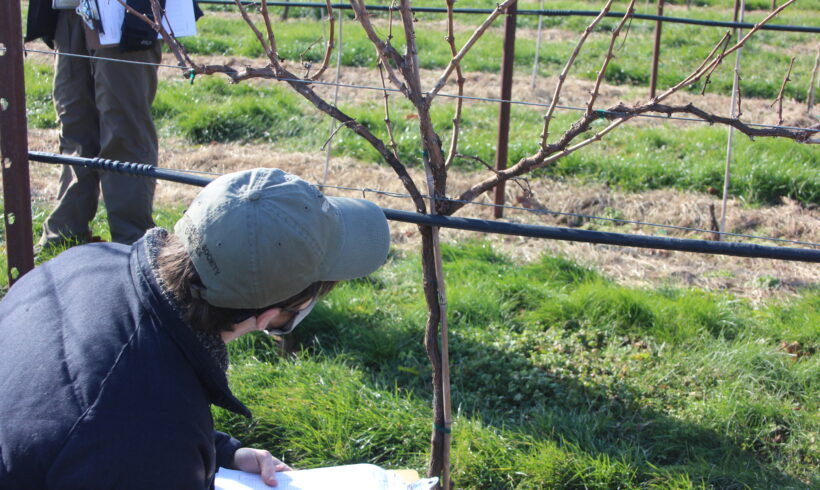Research in Progress: Humans and Dogs Seek Spotted Lanternfly
When spotted lanternfly (SLF, Lycorma delicatula) arrived in Pennsylvania, severe ecological and economic damage ensued– and as of August 2020, spotted lanternfly has been detected for the first time in New York City. Although the insect’s cryptic nature can make detection difficult, early detection is key to protecting both the livelihoods and ecosystems of NY. New research is advancing the effort.
With recent funding from the Cornell Atkinson Center for Sustainability– an organization that supports collaborative sustainability research at Cornell University– the New York Invasive Species Research Institute (NYISRI) is partnering with Cornell Researchers Dr.’s Ann Hajak, Greg Loeb, and NY Cooperative Fish and Wildlife Research Unit Leader Angela Fuller, as well as the NY-NJ Trail Conference (NYNJTC), Working Dogs for Conservation (W4DC), NYS Department of Environmental Conservation, NYS Department of Agriculture and Markets (DAM), and Cornell’s Plant Disease Diagnostic Clinic, to explore the detection and occurrence of SLF in a new way: with both human observers, and dogs.
By surveying vineyards and adjacent natural areas for SLF-egg masses in both New Jersey and Pennsylvania, both humans and canines will put their detection skills to the test. The data gathered will be used in an occupancy model, which will estimate the probability that 1) a location is occupied by SLF, and 2) that a human or canine can detect it. Using these methods, the group will compare the efficacy of human observers and detection dogs, identify environmental factors that influence dogs’ detection abilities, and model the probability of SLF occurrence– all in an effort to pilot optimal search strategies for SLF.
While it’s not the first time detection dogs have been used to identify invasive species, this study is the first to compare SLF detection probability between dogs and humans. And the dogs are well-prepared: WD4C brings 20+ years of experience as the leading conservation dog organization, and the NYNJTC Conservation Dogs Program has been training dogs to detect SLF adults for the past year. The trained dogs currently work with NYS Parks, NYS Department of Transportation, and NYS DAM to conduct cargo searches and field surveys for spotted lanternfly.
The overarching goal of the project is to mitigate the negative impacts of spotted lanternfly. By directly informing search strategies of SLF, this project also helps protect the livelihoods of small agricultural producers in New York State. As Dr. Pete Coppolillo of WD4C remarked in his endorsement, “This project will help mitigate and address [SLF] damage, but to be sure, the new tools and expertise it will provide for land managers and canine trainers and handlers will assist in the fight against all invasive species, not just spotted lanternfly.”
Feature Image Credit: Arden Blumenthal of NY-NJTC








